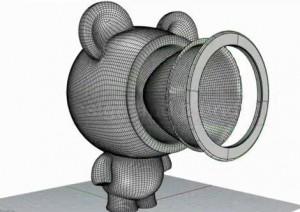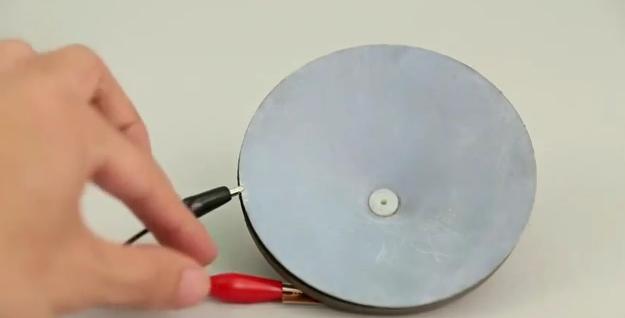We have seen a few iterations of 3D printed speakers in the last year or so, but nothing compares to the technology being developed by scientists at Disney Research, in Pittsburgh, Pa. They have found a way to 3D print  electrostatic speakers, capable of being manufactured in virtually any shape desired.
electrostatic speakers, capable of being manufactured in virtually any shape desired.
The researchers, Yoshio Ishiguro and Ivan Poupyrev, formerly of Disney Research, Pittsburgh, will be presenting their work at the Conference on Human Factors in Computer Systems, in Toronto tomorrow. Unlike conventional electromagnetic speakers which require moving parts, the electrostatic speakers are based on technology which is almost 75 years old. These speakers require no moving parts within their setup, and can function in a variety of unique applications.
In an electrostatic speaker, the sound is produced by the force of exertion on a membrane, which has been suspended in an electrostatic field. These speakers are general used for high pitched sound, but lack in their ability to produce a booming bass. Therefore, such speakers are great for playing sounds of birds chirping, human voices, and other squeaky noises. This would make them ideal for children’s toys, especially since they can be manufactured via 3D printers to fit any toy shape desired. The speakers are also able to produce ultrasonic sound, which are sounds that can not be heard by the human ear. Such sounds could be used in a way which allows toys and games to track each other for a variety of different applications.
“What’s more, it can generate sound across the entire face of the speaker,” Ishiguro stated.
Because of this, the sound can be expelled from all sides of the speaker, unlike that of a traditional electromagnetic speaker, which can only direct sound in one direction via a cone.
These particular speakers were developed with a combination of 3D printing as well as traditional manufacturing methods. Having said this, the researchers believe that within 5 to 10 years, the entire speaker will be able to be 3D printed in any shape, and integrated in virtually any object, all in one piece. It will all depend on how quickly multimaterial 3D printers come to market, capable of printing out electrical circuits and electrodes. Just last week a company called Rabbit Proto announced an open source 3D printing device capable to doing just this to a lesser extent. Discuss the 3D printing of electrostatic speakers at 3DPB.com. Check out the video below provided by Disney Research, for further information on these speakers:
Subscribe to Our Email Newsletter
Stay up-to-date on all the latest news from the 3D printing industry and receive information and offers from third party vendors.
You May Also Like
Industrial Giant Ingersoll Rand Leads $19M Round Backing Inkbit’s AI-Driven 3D Printing
Inkbit, the Massachusetts-based original equipment manufacturer (OEM) of multi-material, AI-integrated 3D printers, has closed a $19 million financing round. Ingersoll Rand, a US giant in the industrial equipment sector, led...
3D Printing Unpeeled: Digital FDM Filament for Functional Gradients
Just published in Nature, a paper by a Seoul National University team looks at “3D printing with a 3D printed digital material filament for programming functional gradients.” Sang-Joon Ahn, Howon...
3D Printing Unpeeled: $5000 Cold Spray 3D Printer, Roland DGA & Living Materials
The AeroForge is a $5000 cold spray metal printer for copper made by a student team at Rice University. In a paper for ACS Central Science a team from Nanjing...
3D Printing News Briefs, April 27, 2024: Research, Digital Dentistry, Cycling, & More
We’re starting today’s 3D Printing News Briefs with some research into 3D printed luminescent quantum-dot polymer architectures and free-form laser beam shaping, and then on to an open source 4-axis...
































